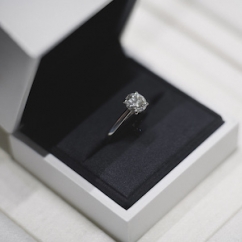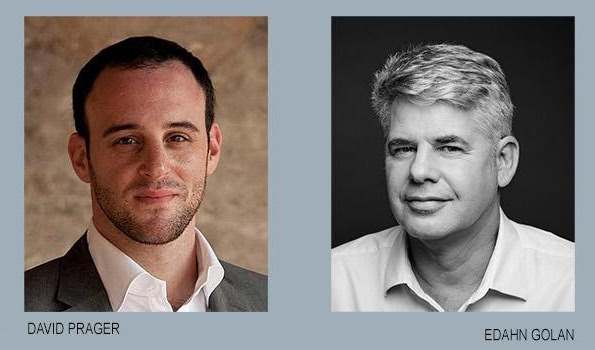Articles and News
What Do Consumers Expect From Their Jewelers, Above All Else? | October 19, 2020 (0 comments)

Amsterdam, Netherlands—What do consumers care about most when buying diamonds jewelry?
Trust. Where once a jeweler’s reputation was enough to say “trust me,” that’s not the case anymore. Consumer expectations have changed dramatically, especially in the last five years. Even jewelers with more than a century of multigenerational ownership must keep proving that they are trustworthy and that the products they sell are creating good in the world.
Opening the World Diamond Council’s annual general meeting Monday was a special session about consumer expectations and how to meet them. WDC president Edward Asscher, diamond industry analyst Edahn Golan, and David Prager, De Beers executive vice president of corporate affairs, addressed how consumer expectations have changed, especially since the onset of the global COVID-19 pandemic.
Prager began by citing De Beers’ ongoing consumer research. Key findings:
- Awareness of gratitude for life and friends is top of mind with consumers. The pandemic has compelled people to reevaluate what’s important to them, and driven them to purchase fewer but better things, choosing mindfully and with better scrutiny.
- Social purpose is new status for luxury goods. It used to be about showing wealth and exclusivity, now it’s about inclusivity. Consumers want the products purchase to be part of the solution, not part of the problem.
- 65% of Americans feel more inclined to give a significant gift to someone they love now, compared to pre-pandemic. For those in a committed relationship, that increases to 77%.
- Although consumers already were trending toward caring about social and environmental issues, it has been reinforced by current events bringing further attention to environmental issues, climate change, and social justice.
- Social issues like #MeToo and #BlackLivesMatter have driven brands to take a stand because it matters to consumers how a brand aligns with their values.
“As an industry, we ask people to spend a significant amount of money. For many, it’s more than almost any other purchase in their lives. We ask consumers to trust us but trust must be verifiable,” Prager emphasized. The status of social purpose has driven transparency in supply chains because brands and retailers can’t make claims about positive impact if they’re not transparent.
The main purpose of the 2020 meeting is to further refine the WDC’s System of Warranties and the Kimberley Process Certification Scheme. The System of Warranties covers safe and secure working conditions, fair labor practices, human rights, and more, and is there to reassure consumers that the diamonds they purchase are ethical and sustainable, said Prager. But the Kimberley Process needs work.
“While the KP is a successful framework, the KP itself requires reform. It’s encouraging to see some progress made but there’s more to do, especially around definition of conflict diamonds,” he said. (Note: The Kimberley Process’s definition of conflict diamonds is limited to those used to fund rebel groups seeking to overthrow a government.)
“The industry has indispensable role to play in maintaining the integrity of the diamond supply chain. While the [existing] definition of conflict diamonds has been able to drive significant change, it’s obvious the definition has to evolve,” he said.

Industry analyst Edahn Golan asked both Prager and Asscher what more can and should be done to integrate ethics into daily business. Prager highlighted De Beers’ Best Practices Programme, which all clients are required to follow and be audited. Asscher added that while all the major and medium-size mining companies have comparable ethics programs in place, that’s not necessarily true of small artisanal miners.
“It’s a totally different ball game,” he said. So far, the WDC has supported private initiatives, such as training facilities to teach artisanal miners more about diamonds so that they can get more money for their production.
“The more money they get, the better for their society,” said Asscher.
He also pointed out diamond manufacturers’ responsibility to do due diligence in sourcing. Becoming a member of the Responsible Jewellery Council is a logical—and doable—first step, he said. It’s a lot of work, but it’s free. RJC’s framework includes the WDC’s System of Warranties’ Seven Principles of Responsible Diamond Sourcing, which include labor rights, human rights, and environmental rights (all according to the United Nations’ guiding principles), plus addressing developing [diamond] communities, a differentiation between natural and lab-grown diamonds, anti-corruption and AML guidelines.
Prager and Golan compared the Kimberley Process Certification Scheme to a traffic light.
“What KP has been asked to do, it has largely done. But you wouldn’t criticize a traffic light for not stopping speeding, because that’s not what it’s designed to do. But if you could design it to do that, it could do more,” said Prager.
Golan pointed out that while most people behave ethically, everyone sees the occasional offender. And those offenders give the entire industry—down to the retailer—a bad name.
It comes back to trust, emphasized Prager. “It is business-critical now that this industry has a framework that is robust and gives confidence to protect a luxury purchase people want to make to express their feelings.”
“The times we live in today are very different from even five years ago,” said Asscher, again emphasizing the research from De Beers and also the Natural Diamond Council that shows the same thing: consumers, especially younger consumers, want to know more about the diamonds they buy, that they’re not just non-conflict, but that they’re bringing good welfare and happiness to all people involved in getting it onto their finger.
Both Prager and Golan are pragmatic. “At the end of the day, business is money-driven. For forces outside business world to demand a certain behavior, it has to be economically feasible,” said Golan.
Prager said that’s why the KP and SOW is a facilitator, not a barrier, to trade. “In today’s world that requires it be real trust and authentic, because you will be very quickly found out by consumers that the confidence you’re looking for is unfounded.”
“In the old way of doing things, jewelers said, ‘take my word for it,’” said Asscher. “If the retailer says this is a clean diamond that has fulfilled all conditions that the modern consumer wants, we must be able to collectively prove that it is true. If we don’t, [consumers] either let diamonds fall off their radar or they’ll go for synthetic diamonds,” he warned.
Or just simply not buy jewelry at all, added Golan.
While transparency is “business critical,” Prager acknowledged the industry tends to overcomplicate it.
“We sell a valuable product for thousands of dollars and we see the consumer expecting to know where it comes from and the role it plays on that journey. We sell a product that in and of itself is bought and given to imbue meaning. We have a fantastic story to tell. People are proud of the route their diamond travels, but confidence in that comes from the ability to verify trust.”







